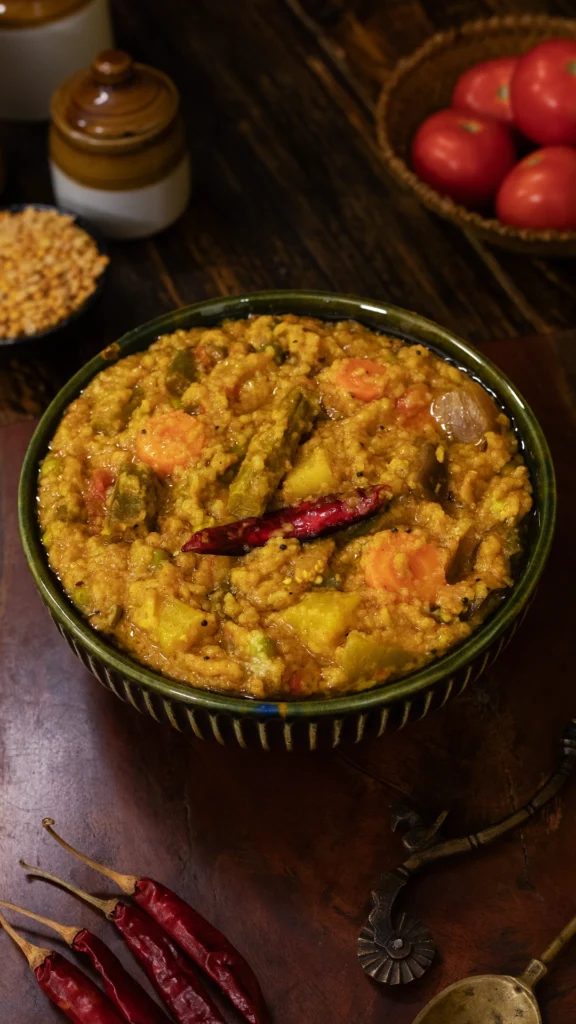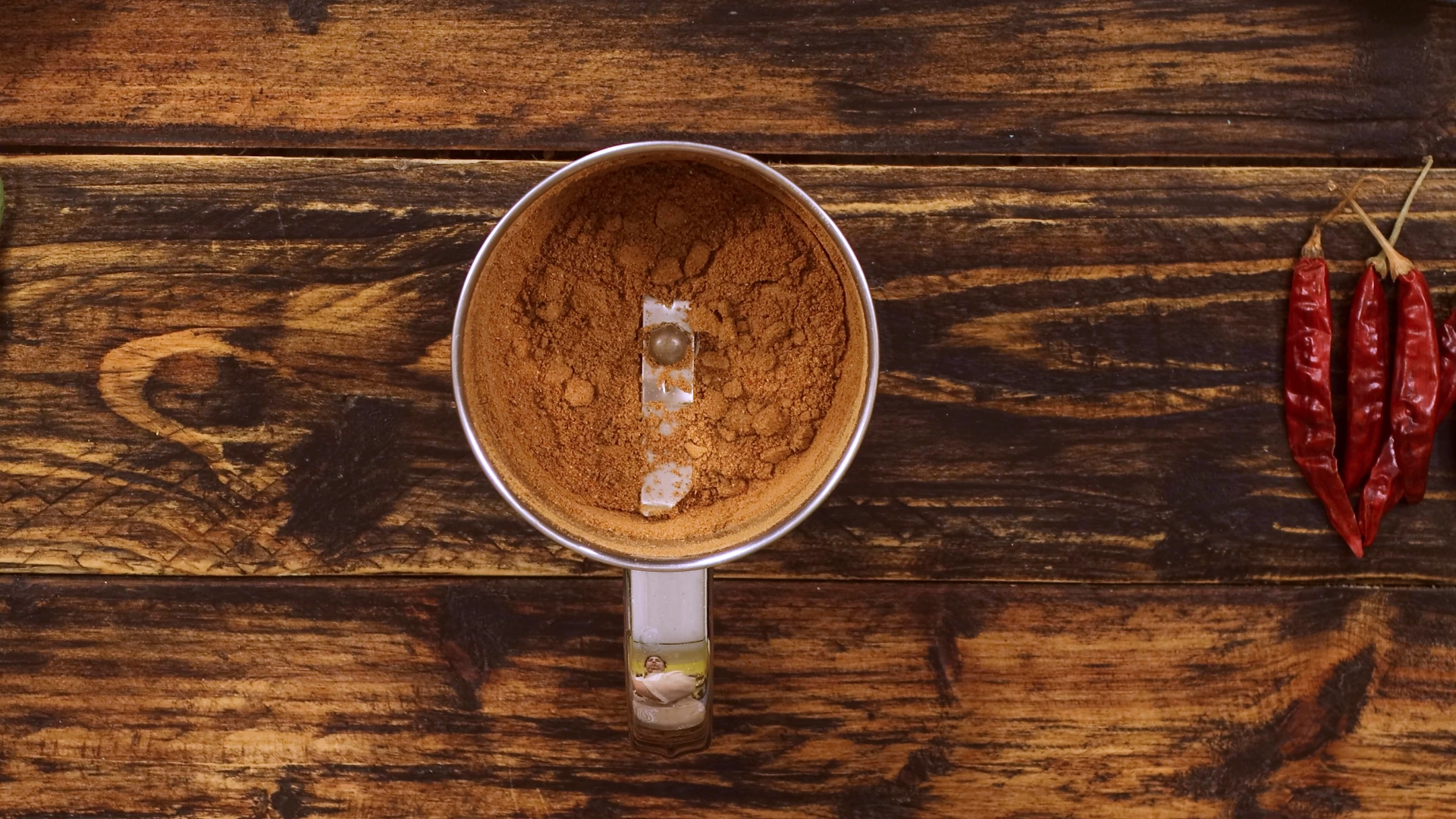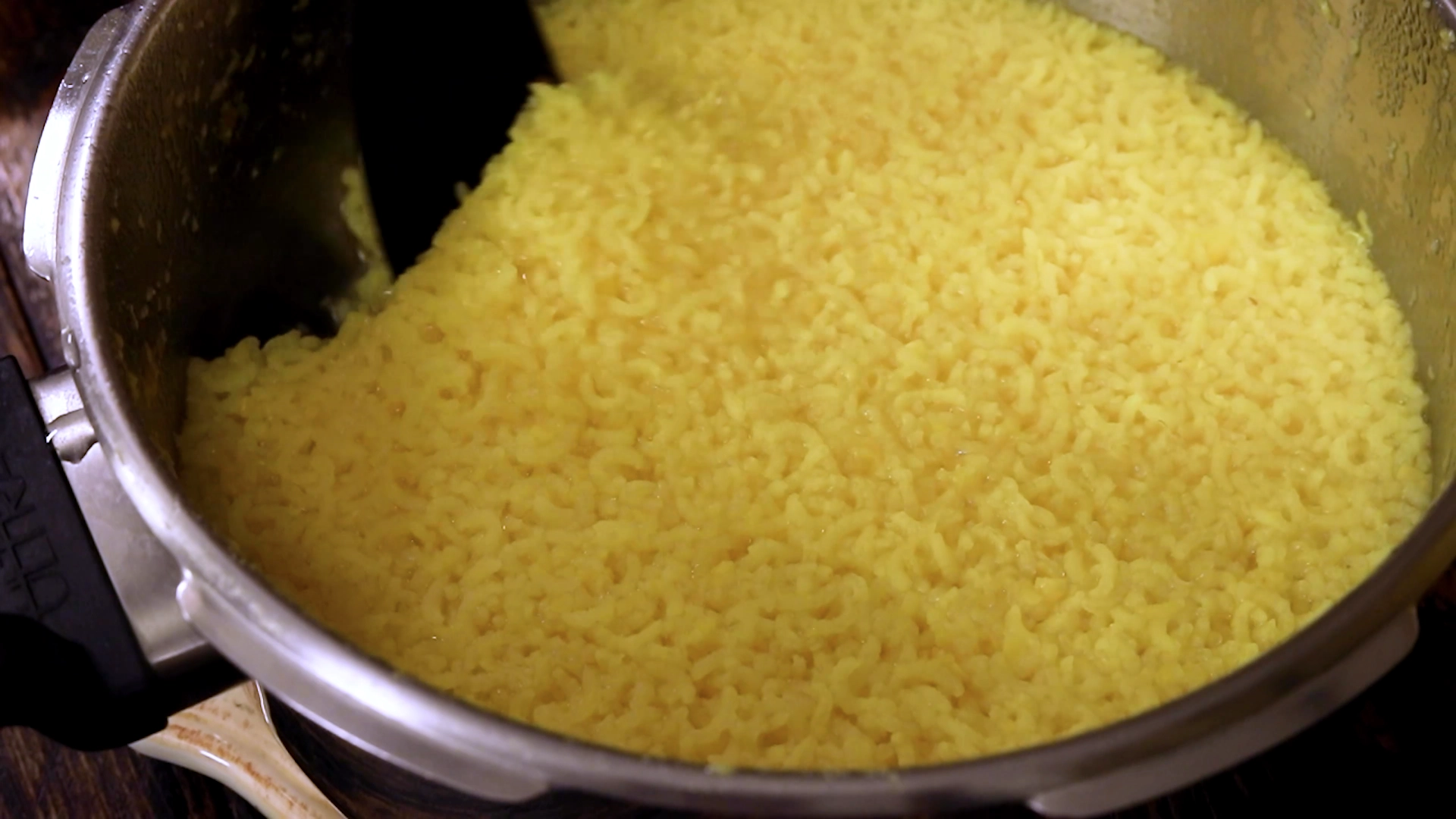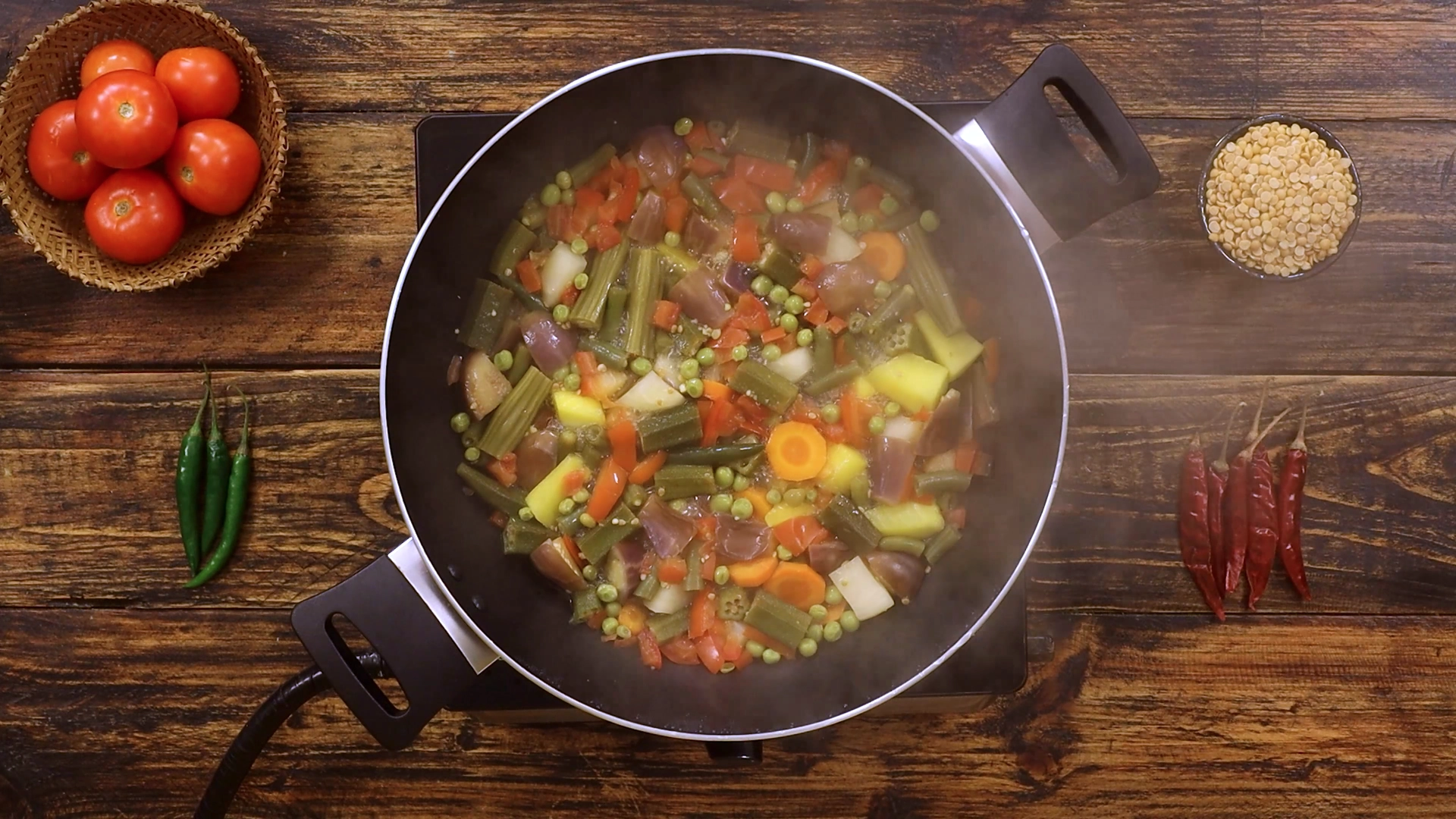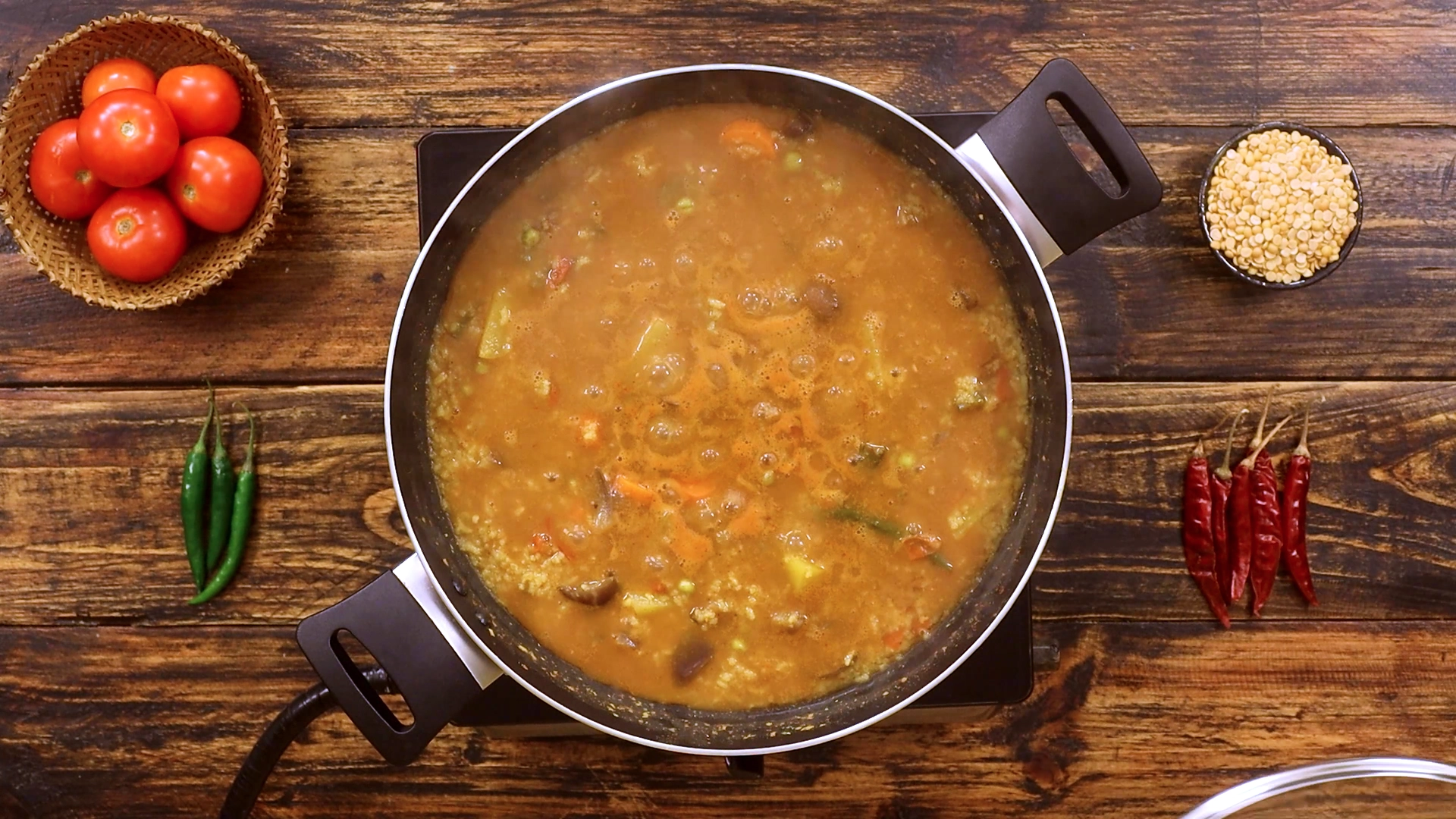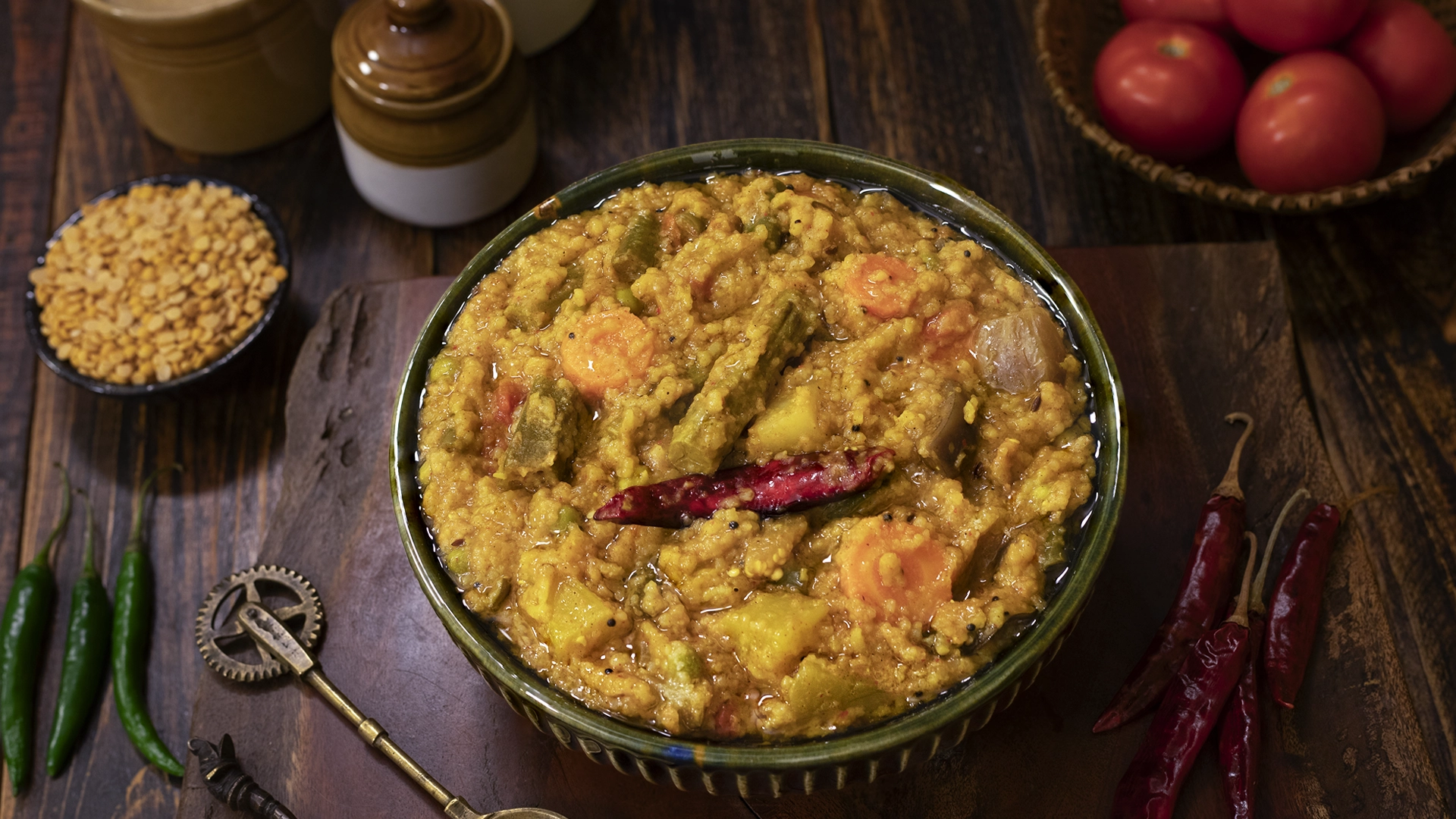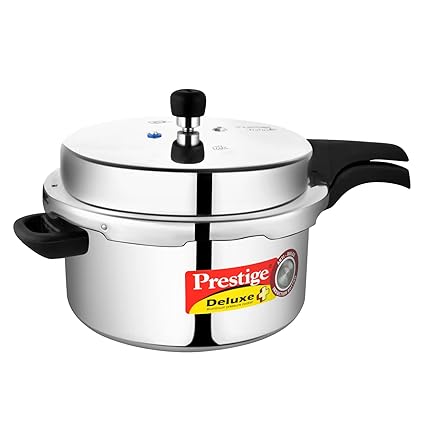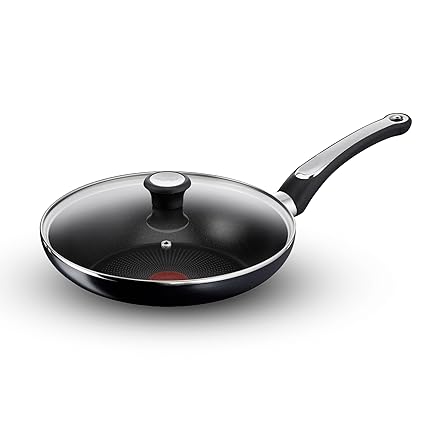Ever wish a single pot could solve dinner, lunchbox, and guests-in-a-hurry all at once?
Kadambam does exactly that. It’s a South-Indian mixed rice that’s hearty, tangy, and layered with roasted masala, seasonal vegetables and a ghee tempering that smells like home. Give it a try once you roast the masala and get the rhythm of mixing rice with veggies; it becomes one of those go-to recipes you’ll make again and again.
Why Kadambam works
- Complete meal in one pot: rice + toor dal for body and protein, a huge variety of vegetables for micronutrients, and roasted masala for depth.
- Flexible & forgiving: swap veggies, scale quantities, make it oil- or ghee-forward depending on the occasion.
- Flavor balance: tamarind (tang) + jaggery (sweet) + roasted masala (earthy & peppery) = a crowd-pleasing profile.
- Great for meal prep & tiffin: tastes even better the next day once flavors settle.
Quick history & cuisine note
Kadambam is a traditional mixed rice found in South India — think of it as a regional khichdi spiked with local spices and tamarind.
It’s comfort food that evolved from the simple idea of using up seasonal vegetables and pantry spices to make something celebratory yet everyday.
Ingredients Breakdown
- Roasted masala (chana dal, urad dal, coriander, cumin, pepper, mustard, red chillies, hing): adds a toasty, nutty backbone and light heat. Roast and grind — it’s the secret sauce.
- Rice + toor dal: gives creamy body and natural thickness when cooked together.
- Mixed veggies (potato, carrot, beans, lady’s finger, brinjal, drumstick, yellow pumpkin, peas, tomato): texture, color and nutrients. Pumpkin brings sweetness and body; drumstick adds a subtle rustic bite.
- Tamarind + jaggery + chilli powder: sweet-tart-spicy triangle that makes the dish addictive.
- Ghee tempering (mustard, cumin, dry red chillies, curry leaves): aroma + the finishing crunch.
Vegan Swap 🌿: Skip the ghee; use cold-pressed oil for tempering and finish with a squeeze of lemon to mimic richness and brighten the dish.
The process — how it all comes together
First, roast and grind the masala ingredients until they smell toasted and warm. That powder is your flavour engine — it lifts everything else.
While that cools, soak and pressure-cook the rice and toor dal together with a splash of ghee so they’re soft and creamy. Separately, simmer a pot of chopped vegetables in about 2 cups of water until tender: you want them cooked but still holding shape. To that veg pan add tomatoes, tamarind extract, jaggery, chilli powder and a few teaspoons of the roasted masala — let the flavors marry and the liquid reduce slightly.
Now fold in the cooked rice-dal gently — you want grain separation but a homogenous flavor. Taste and adjust salt and spice. Add another scoop or two of the masala if you want more punch, cover and let it steam together for 8–10 minutes so the aromatics knit into the rice.
Finish strong: heat ghee, mustard and cumin, toss in curry leaves and dried red chillies until they pop, and pour this sizzling tempering over the Kadambam. Stir once, garnish with coriander, and serve hot.
Pro Tip 💡: Make a double batch of the roasted masala and store it in a jar. It elevates soups, dals and quick stir-fries — and saves 10–15 minutes next time.
What goes along with Kadambam
- Crispy papad/pappadam for crunch.
- Simple potato fry or raita (yogurt or vegan coconut yogurt) to cool the palate.
How to serve
Scoop Kadambam into bowls, drizzle any leftover tempering ghee on top, and garnish with fresh coriander. Serve immediately while the tempering still crackles — that aroma is part of the experience.
Packing & lunchbox tips
- Cool the Kadambam slightly before packing to avoid condensation.
- Use an insulated box for travel; pack chutney or a lemon wedge separately.
- It reheats well — sprinkle a little water and microwave/steam for 1–2 minutes to revive the rice.
Party & bulk preparation
- Scale the recipe by multiplying rice and dal proportionally; increase roasted masala by ~10–15% for larger pots to keep flavors robust.
- Roast masala and chop vegetables a day ahead. Cook rice/dal fresh the same day for best texture, or cook everything and gently reheat with extra tempering just before serving.
- For buffet service, keep a pot on low flame with a little ghee on top and the tempering handy to refresh the aroma periodically
Other Related Recipes You Might Like:-
- Millet Pongal — hearty, savory pongal made with millets and lentils — great one-pot comfort.
- One-Pot Rasam Rice (15 Minutes) — tangy, spiced rasam mixed with rice for a quick one-pot meal.
- Masala Chitranna (Lunch Rice) — tangy, spiced Karnataka-style lemon rice (Chitranna) — bright and zesty.
- Vatha Kulambu Rice — tangy, podi-style rice made with sun-dried tangy masala — rustic and flavorful.
- One-Pot Lobia Rice Recipe — nourishing black-eyed-peas rice cooked in one pot — protein-forward and simple.
- Lemon Rice — classic tangy lemon-flavored rice with crunchy tempering — light and refreshing.
- Rava Pongal — semolina-based savory pongal with mild spices — smooth and comforting.
Kadambam
Description
Kadambam is a wholesome South Indian one-pot meal that brings together rice, dal, a rainbow of vegetables, and a fragrant roasted masala. It’s tangy from tamarind, lightly sweetened with jaggery, and finished with aromatic ghee tempering. Perfect for a healthy lunch or a comforting family meal, this sambar rice is hearty, flavorful, and easy to make once you get the hang of roasting the masala and simmering the veggies. It’s a great way to sneak in lots of vegetables while enjoying a classic South Indian taste.
Friendly tip: the more variety of veggies you add, the more colorful and nutritious your kadambam will be — and trust me, it tastes even better the next day!
Ingredients
For tempering
Instructions
Prep Work
-
Make roasted masala
Roast chana dal, urad dal, coriander seeds, pepper, cumin seeds, mustard seeds, and red chillies on low heat until golden and fragrant. Add asafoetida, cool completely, and grind to a fine powder.
-
Soak rice and dal
Wash rice and toor dal separately in water until clear. Soak both for about an hour, then drain and keep aside. -
Chop vegetables
Peel and chop potatoes, carrots, beans, lady’s finger, brinjal, drumsticks, yellow pumpkin, and tomatoes into medium-sized pieces. Keep peas ready. -
Prepare tamarind juice
Soak tamarind in warm water, squeeze out the pulp, strain, and set aside for cooking. -
Ready the tempering ingredients
Measure ghee, mustard seeds, cumin seeds, and red chillies. Pluck fresh curry leaves and slit green chillies.
Method
-
Pressure cook rice and dal
Add the soaked rice and toor dal to a pressure cooker with water, turmeric, salt, and ghee. Pressure cook for 5 whistles until soft. Let pressure release naturally.
-
Cook the vegetables
In a wide pan, bring water to a boil. Add chopped potatoes, carrots, beans, lady’s finger, brinjal, drumsticks, yellow pumpkin, green peas, tomatoes, and slit green chillies. Sprinkle rock salt, cover, and cook for 15 minutes until tender. -
Add tamarind and spices
Pour in tamarind juice, then mix in chilli powder, jaggery, and part of the roasted masala powder. Stir and simmer until the gravy thickens slightly and flavors blend. -
Mix in rice and dal
Gently fold the cooked rice and dal mixture into the simmering masala vegetable base. Stir until everything combines evenly. -
Adjust flavor and simmer
Taste and adjust salt or spice. Add the remaining masala powder. Cover and simmer on low heat for 10 minutes, so the flavors meld and the consistency turns creamy. -
Prepare tempering
Heat ghee in a small pan, add mustard seeds, cumin seeds, dry red chillies, and curry leaves. Let them splutter. Add a pinch of asafoetida. -
Finish the dish
Pour the hot tempering over the kadambam rice. Mix gently and serve warm.
Nutrition Facts
- Amount Per Serving
- Calories 377kcal
- % Daily Value *
- Total Fat 11.7g18%
- Saturated Fat 6.3g32%
- Sodium 500mg21%
- Potassium 158mg5%
- Total Carbohydrate 60.4g21%
- Dietary Fiber 9g36%
- Sugars 8g
- Protein 10.9g22%
- Vitamin A 5346 IU
- Vitamin C 1.9 mg
- Calcium 60 mg
- Iron 2.2 mg
- Magnesium 60 mg
* Percent Daily Values are based on a 2,000 calorie diet. Your daily value may be higher or lower depending on your calorie needs.

